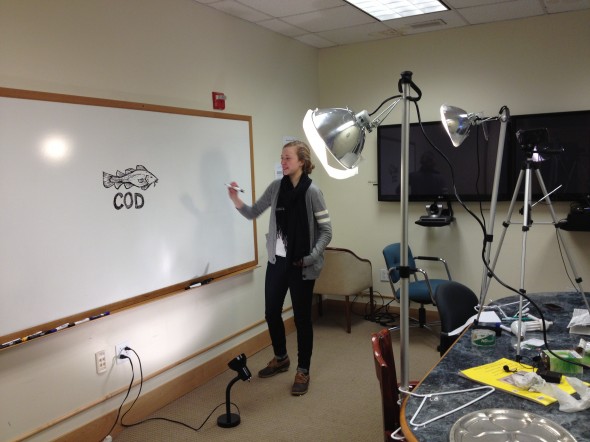Content, as the saying goes, is king. But these days, it might be more accurate to say that video is king. Google has promoted it in their search results. Stats show that people engage with and share video widely. Meanwhile, it seems like almost every company, organization or devoted hobbyist is producing video, hoping for that content moonshot: a truly viral video. If your grandparents can make a great video, why can’t you?
In my current role at CLF, I am tasked with one challenge: how can we achieve our goals with content marketing? The goal may be fundraising for an appeal cycle, or it may be an advocacy goal around a specific issue. I try to think of engaging solutions across platforms, in a way that would engage people but also be an efficient and effective use of resources.
Most recently, the issue at hand was Atlantic cod. Due to decades overfishing and habitat destruction, they’re in collapse. The collapse of this fish — so iconic to New England’s way of life — threatens coastal towns, economies and people. It’s a simple, tragic story. But the question presented to me was: how to tell this story?
One of the solutions we agreed to was to do a video. It was a simple idea, and one I had been advocating for a long time. Why? Because if you approach it with discipline, and with creativity, video is a great way to translate otherwise wonky, complex issues into simple, compelling content. When it comes to cod at CLF, we had the right advocate, and the right issue. So we set to it.
We jerry-rigged a lighting set up, following Wistia’s great advice. We filmed it ourselves on a terrible camera in a small conference room. And we edited it in a rush, fixing issues along the way.
The results? Fantastic. It’s been picked up organically by a few places — including my favorite fly fishing blog! — and has been shared widely. In the end, the advocacy push yielded hundreds and hundreds of letters to John Bullard at NOAA. It was, I’m pleased to say, one of the most successful advocacy alerts we’ve ever implemented.
What were the ingredients to this success? This is speculative, of course, but I would point to three things:
– Keep it simple. Maggie Williams’s fantastic drawing of the cod in decline is both compelling — how can you not love that cod drawing? — and simple. It’s my belief that people appreciate and seek out simple guides to complex issues.
– Use charisma. There’s no doubt that Peter Shelley is a compelling advocate. He’s a seasoned pro: Peter filed the first lawsuit that led to the cleanup of Boston Harbor, and has been an ocean advocate for decades. Putting personality front and center in these sorts of videos is essential. In establishing a connection, the messenger is as important as a message.
– Be creative. I’ve already touched on this, but people have loved Maggie’s drawings — and rightly so. They’re great. She’s done a bunch of fantastic work for Bowdoin on sustainability and for their alumni office. These sorts of creative approaches are fun, are visually engaging, and totally unique to each video. They sustain attention by maintaining a focus not just on the issue, but on the art, without sacrificing the message. In fact, by reaching a broader audience, the engaging drawings broadcast your message further than the issue alone would have carried it.
Buikding on the success of this video, we’ll be producing more video soon. I look forward to it: it’s a product that delivers results, and a product that everyone enjoys produces.

